French Inspired Historical Doors
The best interior and exterior doors combine great design and fine craftsmanship.
Hull Millwork's door designs are often inspired by history, especially historic designs from Europe. When deciding how you want your doors to look, look back, to historic doors of France!
Ten years ago, I took my family to France to look
at architecture. We traveled to the great bastions of French design, Versailles
and Fontainebleau. Fontainebleau is a little less known than Versailles. Fontainebleau
was where the Kings of France went hunting; they built hunting lodges
there. Depending on the political mood,
the Kings of France held court in Fontainebleau, occasionally.
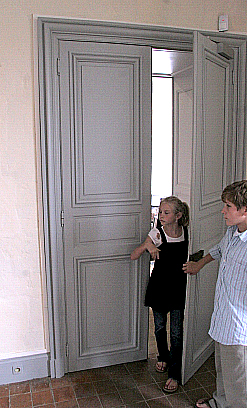
French Inspiration
I’m an architectural millwork and molding "geek." I'm fascinated by how the French designed and built homes and what their doors, windows, molding and decorative trim looks like. They look different from the millwork of other countries. It didn’t take long before I was inspired by French ideas! You'll see an example of my historic French inspiration in this photo (not my kids, the doors).
Note the following:
- The 3-panel design is typical in the French style interior door. You’ll see it often corresponds to the height of a chair rail and was often part of the proportion system in a room.
- The top 2 panels are the same, the middle panel is different. This is typical of the French. They were master craftsmen, the finest designers, and would not be satisfied with their 3-panel door unless it was special. And it is.
Later, in a different part of France, I noticed the panels on this door and was enchanted by the scalloped edges. The more I searched, I began to see that this was somewhat common.
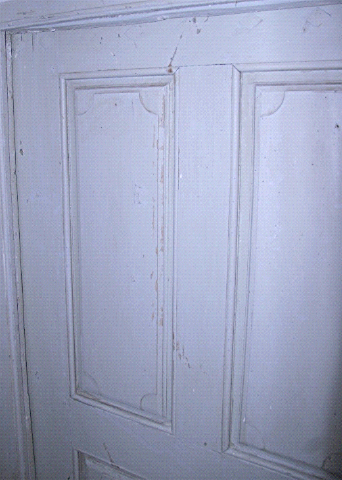
Doors of this period (not just French) often had a public and private face. The more decorative face was on the public side of rooms, while the simple face was for hallways or servant corridors. In the illustration below, you see how varied and complex the profiles are. Because of the sharp angles, these cannot be easily made with machines today. These shapes require special focus, and tools, to get them right. Notice the hallmark French beak-molding, a gothic and classical mix that is uniquely, French.
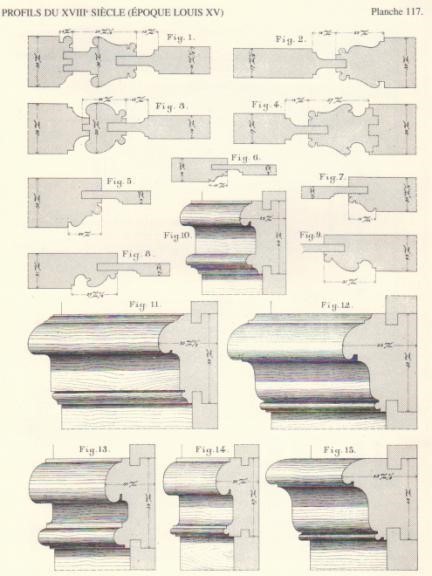
Today's Client
Our clients wanted doors which were unique yet traditional. We already had a lot of design inspiration. We settled on this door design where:
- We have a 3-panel configuration. The top and
bottom panels are the same and the middle panel is different. - We introduced the diamond design into the bottom
panel of these doors. In paint grade or stain grade they both look great. - We didn’t opt for public and private side, but
this is easily accomplished by changing panel molds in final production. - We used a floating tenon on the interior doors
(not shown). We think tenons are better than dowels and they have historic
precedent.
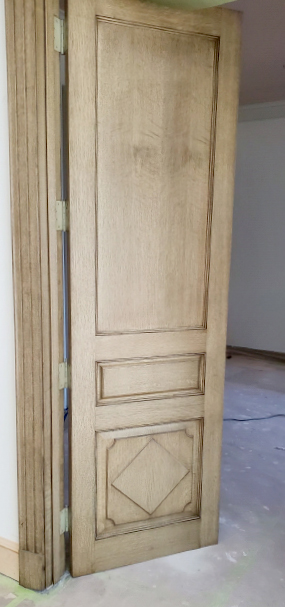
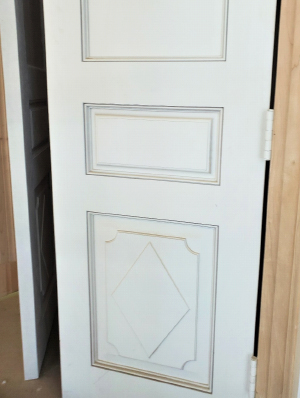
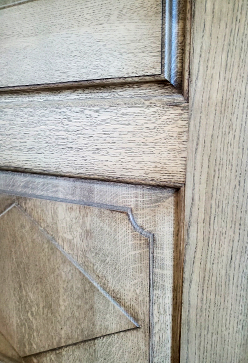
If you can’t travel to France for inspiration, we invite you to spend time in the Hull Millwork library and woodworking shop. Together we can get inspired by French design and craftsmanship!
Want to continue your journey and learn more about historical doors? Jump on over to my blog titled, Know Your Doors: Paneled Doors or check out, Traditional Building | Craftsman Doors 101. And get inspired by our gallery of door projects.
If you're looking for CEUs, you can view my on-demand webinar, Traditional Doors: A Master Class on Craft, Form and Function.

